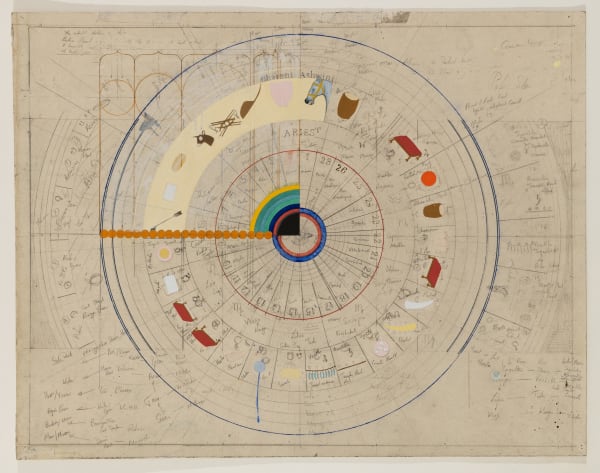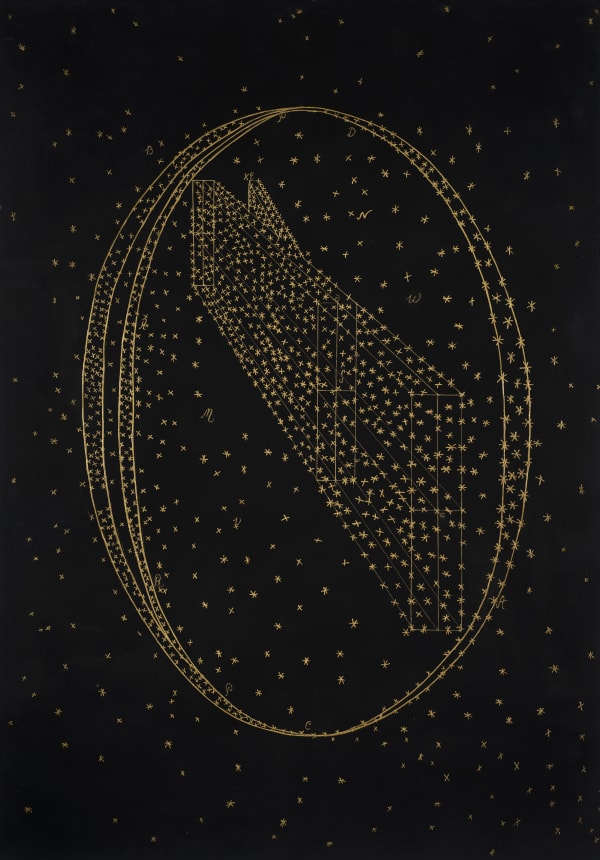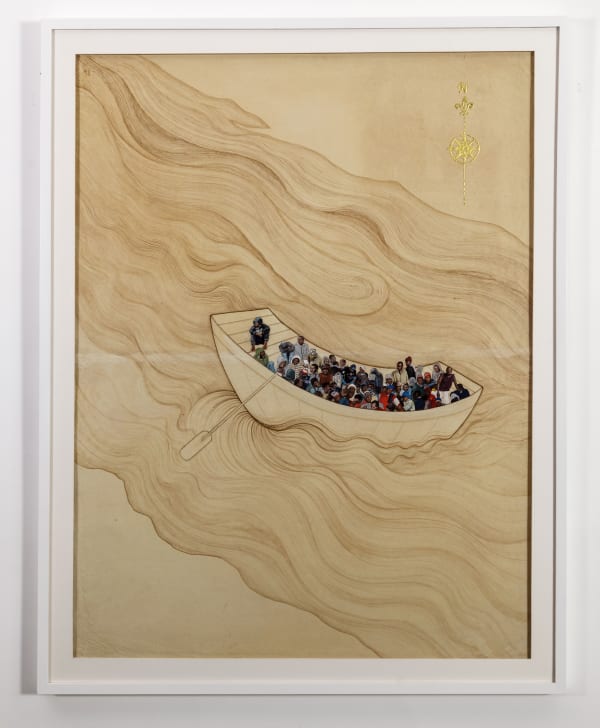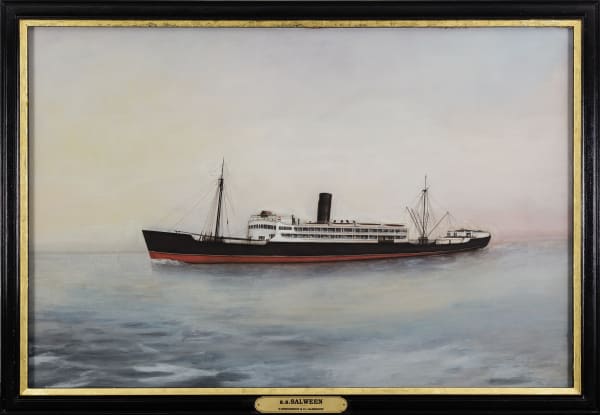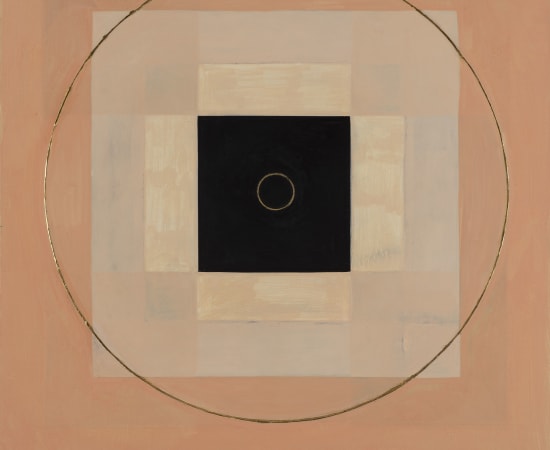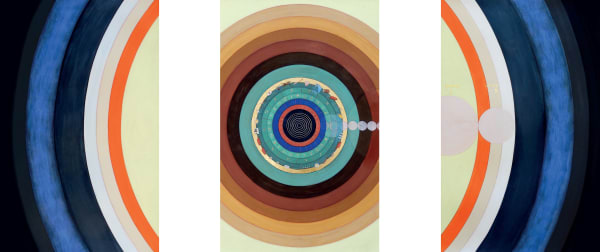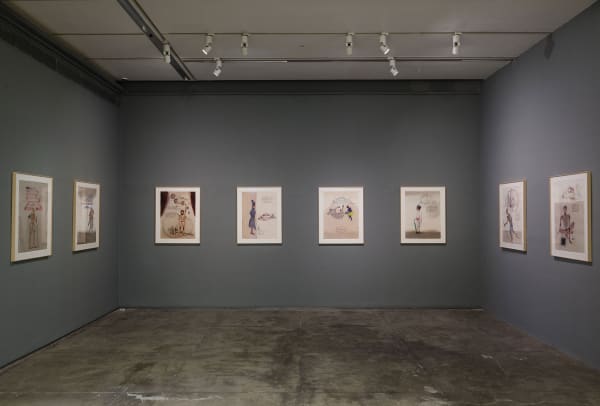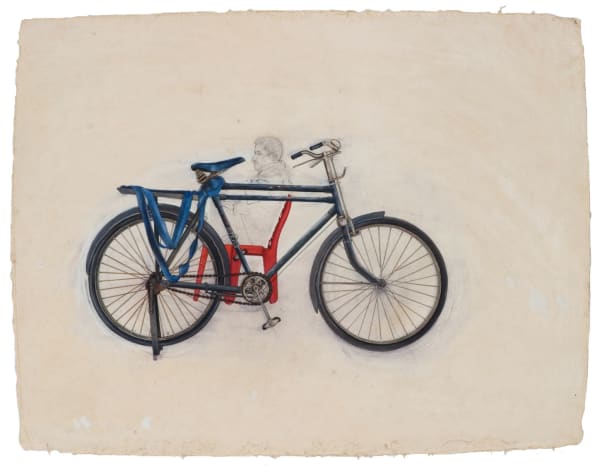Desmond Lazaro b. 1968
-
 Precession, 2021
Precession, 2021 -
 Untitled, 2021
Untitled, 2021 -
 Untitled, 2021
Untitled, 2021 -
 Purusha IV, 2020-21
Purusha IV, 2020-21 -
 The Moons of Chartres, 2020-21
The Moons of Chartres, 2020-21 -
 The Venus Pentagram, After Giovanni Domenico Cassini 1771 & James Ferguson 1799, 2020-2021
The Venus Pentagram, After Giovanni Domenico Cassini 1771 & James Ferguson 1799, 2020-2021 -
 Herschel I, 2020
Herschel I, 2020 -
 Chile 1973 Camilla Iturra, 2019
Chile 1973 Camilla Iturra, 2019 -
 The Dunhuang Star Atlas, DSA I, 2019
The Dunhuang Star Atlas, DSA I, 2019 -
 The Common wealth, 2017
The Common wealth, 2017 -
 The 'In-Coming' Passengers: Part III 'Crossing the Med', 2015-2016
The 'In-Coming' Passengers: Part III 'Crossing the Med', 2015-2016 -
 The S.S. Salween, 2015-2016
The S.S. Salween, 2015-2016
Having lost a parent recently, I find myself looking for assurance, like fixed stars on a map, constantly trying to fathom where I am, or rather where I belong. In this sense the heavens bring much comfort, as it absorbs unanswered questions, holds them in wonder until I can find safer ground and move on.
-Desmond Lazaro
b. 1968, in Leeds, England
As one investigates Desmond Lazaro’s artistic journey, much of it is through map-making – exploring both his personal mapping (which has been a complex one), but one that has also transcended into the journeys of explorer’s, star maps and the wider cosmos, he continually looks into how we reimagine the universe within our own microcosmic journey.
Desmond Lazaro’s work reinvents miniature painting, the tradition he was trained in. His is a boundary-pushing art that makes this traditional craft seem especially current. Born in Leeds in 1968, Lazaro came to India in 1990 to study at the art school of Baroda. There, he became obsessed with the miniature paintings of Rajasthan and went to train for twelve years in Jaipur under late master painter Bannu Ved Pal Sharma. Lazaro chose to adopt a craft that is alien to British art education and to deploy it to describe the world around him. He has since worked in the pichvaii and miniature painting techniques, and also wrote (and published) doctoral thesis on the topic. His approach is learned and meticulous. Lazaro uses handmade paper and creates his own pigments from grinding semi-precious stones or natural elements. But by opting for present-day subject matters he disrupts the conventions of miniature painting.
In 2016, Lazaro started a series titled, ‘The In-Coming Passengers’, opening up new lines of enquiry. This body of work primarily focused on the artist’s family history and the reworking of official records and found material. This archival investigation first started in 2013 with works that reconfigure the baptism certificate of Peter Lazaro, the great-grandfather of the artist who lived in Madras.
Working from an intimate personal space that explored his own journey, Desmond went on to investigate early explorers inspired by Buckminster Fuller's Dymaxion Maps which takes a non-hierarchical approach to geography where there is no up or down, no North or South. Lazaro's work includes re-imagined Dymaxion Maps and their three-dimensional rendering in the form of an icosahedron mobile.
From there, having spent time in Dunhuang (Western China) at the Margao Buddhist Cave site where the oldest star map (The Dunhuang Star Atlas) was discovered in 1906. The map illustrates star constellations and cloud divination in equal measure. And much like the Dunhuang Star Atlas, this work offers both a mythological and empirical view of the heavens, upon which many cultures would later base their calendars systems.
In the current body of works in which he is delving deeply in astronomy and cosmology, he was particularly interested in how early star maps represented the heavens as a series of concentric circles, each circle being a planetary orbit. The choice of colour within these circles may seem random, but clearly the artist was making a relationship between representation and symbolism. Studying, referencing early medieval manuscripts illustrating geo (earth) centric view of the heavens he found each concentric circle represented a visible planet. According to Hermes, the Greek messenger of Gods, the earthly (metal) pigment colours not only symbolize the seven visible planets but are in fact its tangible form.
For an artist whose primary ingredient has been colour, specially given the fact that he grinds his own pigment – the combination of his ongoing research into planetary systems bring together two forces that Desmond Lazaro personal cosmology orbits within!
The artist lives and works between Australia and Pondicherry.
-

In the making: Drawing, Refining, Revising
Group Show 2 Aug - 3 Sep 2024In the Making: Drawing, Refining, Revising is a group exhibition where we have brought together 15 artists from the gallery to whom drawing is the essence of studio life: a...Read more -

Part 1: Framing | CheMoulding: Framing Future Archives
Curated by Shaleen Wadhwana | 60 Years of Gallery Chemould 15 Sep - 22 Oct 2023Anant Joshi, Archana Hande, Atul Dodiya, Bhuvanesh Gowda, Desmond Lazaro, Dhruvi Acharya, Gigi Scaria, Jitish Kallat, Madhvi Subrahmanian, Meera Devidayal, Mithu Sen, NS Harsha, Ram Rahman, Ritesh Meshram, Shakuntala Kulkarni,...Read more -

Modus Operandi III: Together Alone
Group Show 11 Aug - 10 Sep 2022The premise of Modus Operandi began and continues with an exhibition of Chemould's roster of artists - every iteration presents us an opportunity to exhibit them under one roof, in...Read more -

Cosmos
Desmond Lazaro 10 Feb - 26 Mar 2022Radical Homelessness: On Desmond Lazaro’s Recent Works Desmond Lazaro’s art has often been situated in a history of diasporic experience spanning the colonial and postcolonial eras. The multiple geographical and...Read more -

SOUTH SOUTH VEZA
Group show 24 Feb - 2 Mar 2021SOUTH SOUTH is an online community, an anthology, an archive and a resource for artists, galleries, curators and collectors invested in the Global South. In the often disputed battleground of...Read more -

Out-site / Insight
Group Show | In touch Edition I 24 Apr - 23 Jul 2020We approached our artists inquiring how they were doing in this time of isolation. Several of them are unable to make art - using their time to read, watch films,...Read more -

Modus Operandi II
Group Show 18 Jul - 24 Aug 2019Synonymous with the first edition of Modus Operandi, where we brought together over 25 Chemould artists and their unique artistic language in dialogue with each other through various mediums, we...Read more -

Modus Operandi
Group Show 13 Jul - 18 Aug 2018This July, Chemould Prescott Road presents Modus Operandi , a show that has been devised by Shireen Gandhy and the Chemould team, brin ging together a large number of Chemould...Read more -

The In-Coming Passengers
Desmond Lazaro 10 Mar - 16 Apr 2016Desmond Lazaro was born into an Anglo Indian family in Leeds, England. His parents on the other hand migrated from Burma to Leeds in 1957 and Lazaro's great-grandfather hailed from...Read more -

A Summer Mix
Group Show 20 May - 15 Jul 2015Aditi Singh | Anju Dodiya | Atul Dodiya | Bhuvanesh Gowda | Desmond Lazaro | Dhruvi Acharya | Gigi Scaria | Jitish Kallat | Lavanya Mani | Meera Devidayal |...Read more -

Aesthetic Bind: Floating World
50 Years of Chemould | Group Show 19 Mar - 17 Apr 2014Among several imaginaries conjured by the Floating World, there is cosmology and a revolving earth-world; oceanic flows and cartographic representation of the globe’s topography; and an incremental growth in migration,...Read more -

New Works
Desmond Lazaro 17 Sep - 8 Oct 2008This body of work is a return to contemporary imagery, the occupancy of discarded minutes of everyday life - fleeting moments that rarely one retains as visual. He continues to...Read more
-

Aesthetic Bind
50 Years of Contemporary Art 2013 - 14SoftcoverRead more
Dimensions: 24 x 29 cm -

Cosmos
Desmond Lazaro 2022Hardcover, 140 pagesRead more
ISBN: 978-81-954610-2-8
Dimensions: 7.5 x 10 in -
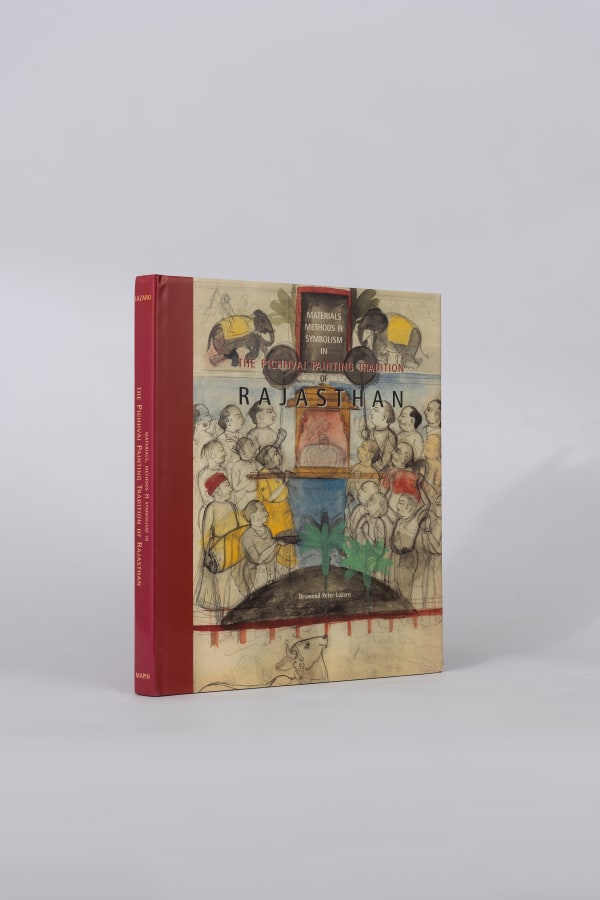
Materials Methods and Symbolism in The Pichvai Painting Tradition of Rajasthan
Desmond Lazaro 2005Hardcover, 204 pagesRead more
Publisher: Mapin
ISBN: 81-88204-37-4/1-890206-74-1
Dimensions: 28.5 x 25cm -

Paintings
Desmond Lazaro 2008HardbackRead more
Dimensions: 17.5 x 22 cm -
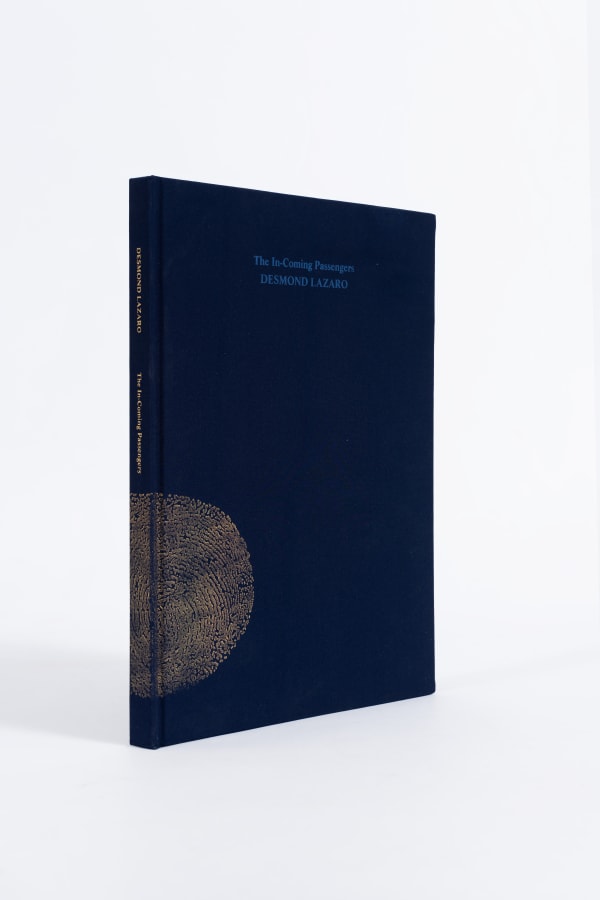
The In-Coming Passengers
Desmond Lazaro 2016HardbackRead more
Dimensions: 28.5 x 21 cm
-

Art Mumbai
Mumbai 16 - 19 Nov 2023Read more -

Art Dubai
Dubai 1 - 5 Mar 2023Booth E1 Public days: Mar 1 - 5, 2023 We look forward to welcoming you once again in person to our booth at Art Dubai...Read more -

India Art Fair 2023
New Delhi 9 - 12 Feb 2023Booth B2 Public days: Feb 9 - 12, 2023 We look forward to welcoming you once again in person to our booth at India Art...Read more -

Art Basel 2022
Basel, Switzerland 13 - 19 Jun 2022Booth J10 Public days: Jun 13 - 19, 2022 We look forward to welcoming you once again in person to our booth at Art Basel...Read more -

Art Basel OVR: Portals 2021
Online 16 - 19 Jun 2021Online Viewing Rooms Public days: June 17 - 19, 2021 VIP Preview: June 16 - 18, 2021 As one investigates Desmond Lazaro’s artistic journey, much...Read more -

Art Basel 2020
Online 17 - 26 Jun 2020Online Viewing Room Public days: June 19 - 26, 2020 VIP Preview: June 17 - 19, 2020 To access the Online Viewing Rooms, create an...Read more -

Art Basel Hong Kong 2020
Online 18 - 25 Mar 2020Online Viewing Room Public days: March 18 - 25, 2020 To access the Online Viewing Rooms, create an Art Basel Profile here Chemould Prescott Road...Read more -

India Art Fair 2020
New Delhi 30 Jan - 2 Feb 2020Public days: Jan 30 - Feb 2, 2020 Chemould Prescott Road presents a suite of works this year at India Art Fair 2020 that reflect...Read more -

Art Basel Hong Kong 2019
Hong Kong 29 - 31 Mar 2019Public days: March 29 - 31, 2019 Chemould Prescott Road has a roster of senior, mid-career and young artists who have been part of the...Read more -

Art Basel 2018
Basel, Switzerland 13 - 17 Jun 2018Chemould Prescott Road presents a suite of works this year at Art Basel that reflect the diverse sensibilities of its gallery programme. From Anju Dodiya...Read more -

Art Basel Hong Kong 2017
Hong Kong 23 - 25 Mar 2017Public days: March 23 - 25, 2017 Chemould Prescott Road has a roster of senior, mid-career and young artists who have been part of the...Read more -

Art Basel 2016 Unlimited
Basel, Switzerland 16 - 19 Jun 2016Public days: June 16 - 19, 2016 Chemould Prescott Road has a roster of senior, mid-career and young artists who have been part of the...Read more -

Art Basel Hong Kong 2013
Hong Kong 23 - 26 May 2013Public days: March 15 - 17, 2015 Chemould Prescott Road has a roster of senior, mid-career and young artists who have been part of the...Read more -

FIAC 2010
Paris, France 21 - 24 Oct 2010Public days: Oct 21 - 24, 2010 Chemould is honored to return to the Grand Palais in Paris for the 2010 Edition of Foire Internationale...Read more


